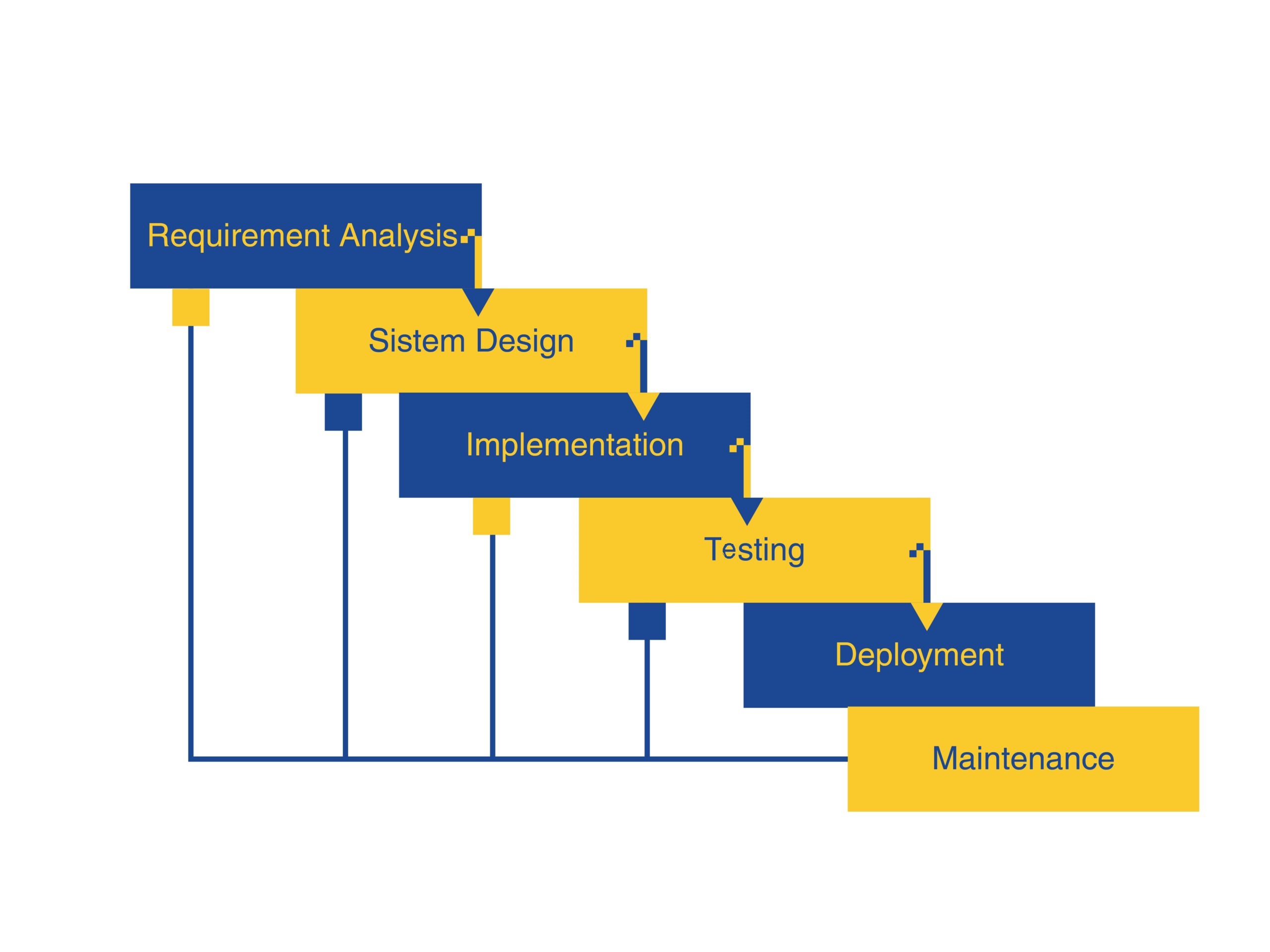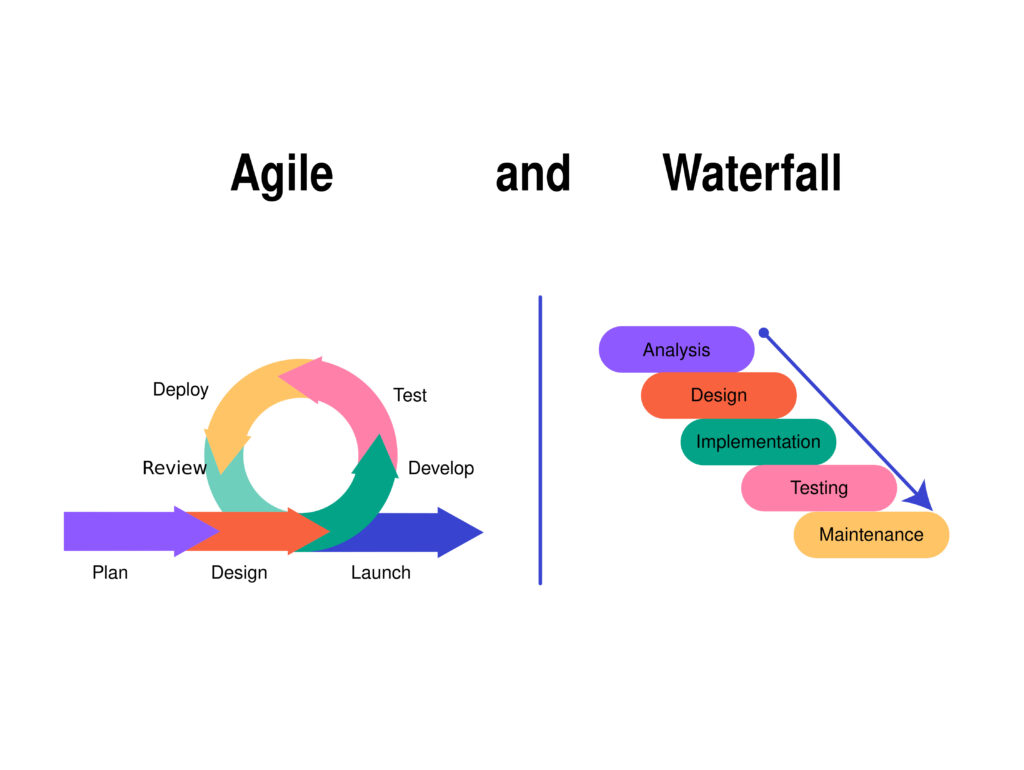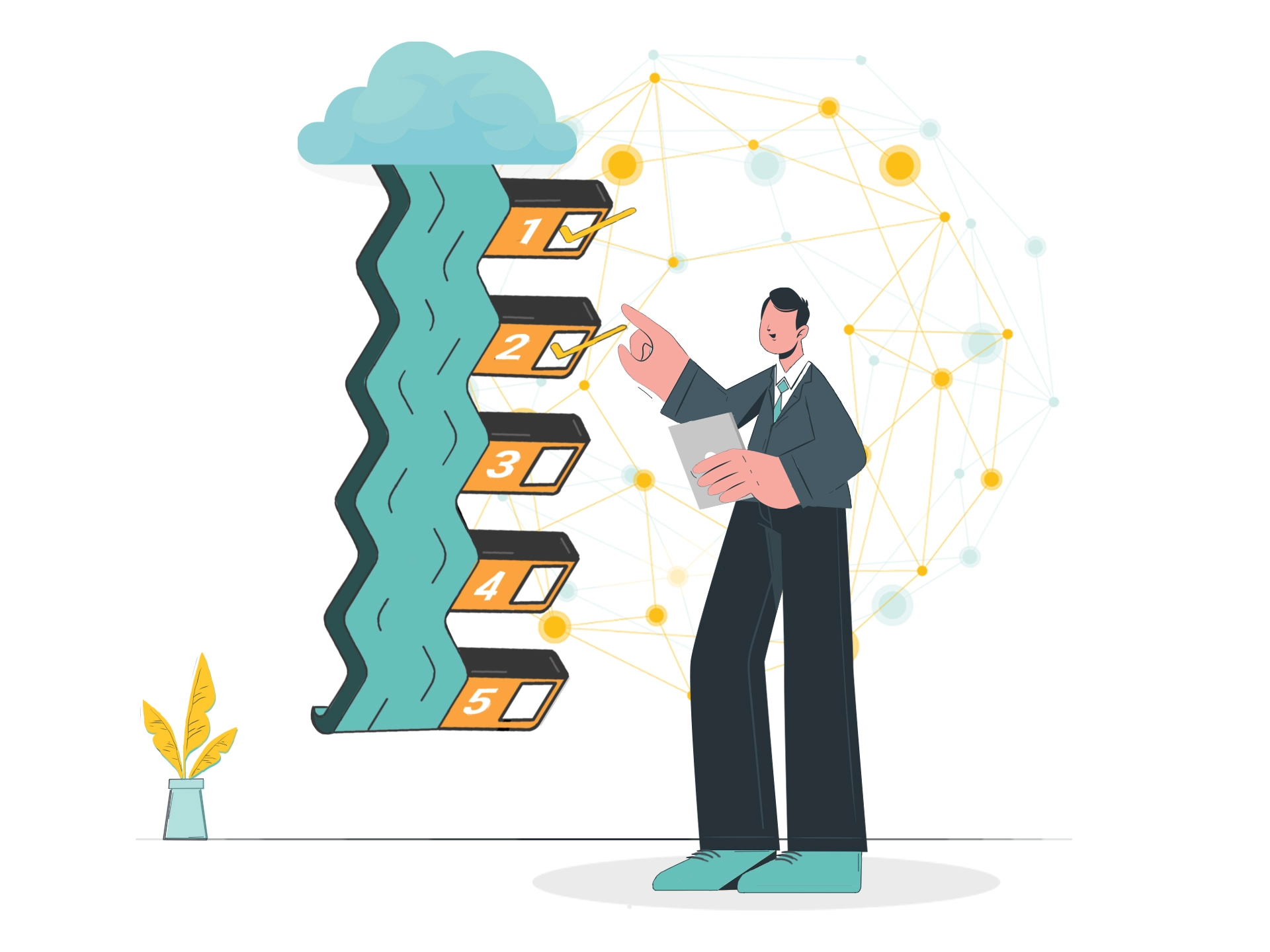Fighting to keep your projects on schedule among scattered tools for communication, poor task visibility, and ongoing integration problems?
These difficulties impede development and cause unhappy teams and missing deadlines. This ultimate guide on Waterfall Project Management is here to help you bring that anarchy under control.
Here’s what you can expect:
- From requirements collecting to maintenance, a thorough understanding of every phase of the Waterfall approach
- Practical advice and ideas for quickly improving your project management approach.
- Tested best practices to give your projects ideal outcomes.
Let’s go!
What is Waterfall Project Management?
Waterfall Project Management is a time-tested approach rooted in the manufacturing and construction industries of the late 1960s1. Initially proposed by Winston W. Royce in the 1970s2, Waterfall follows a linear, sequential process where each project phase must be completed before moving on to the next.
This methodology is ideal for projects with well-defined requirements and timelines, such as healthcare or construction, where predictability and documentation are critical.
Phases of Waterfall Project Management:
- Requirements Gathering:
All requirements are gathered and documented at the start of the project. This phase ensures a complete project scope is defined before any work begins. Clear requirements help reduce uncertainty later in the project. - Design:
Based on the requirements, detailed design plans are created. These plans provide a roadmap for development, outlining the project’s structure, technology, and workflow. - Development:
During this phase, the actual product or system is built strictly following the design plans. Since all design aspects are pre-determined, changes are rarely made at this stage, which helps ensure that the product aligns with the original vision. - Testing:
Rigorous testing is performed to identify and resolve any issues or bugs. Testing ensures the product meets the initial requirements and functions as expected. - Delivery:
Once testing is complete, the product is delivered to the end user. In industries like healthcare, where timelines and accuracy are critical, Waterfall’s focus on completing phases in sequence ensures a reliable final product. - Maintenance:
After delivery, ongoing support and updates are provided to ensure the product functions properly in its operational environment. This is particularly important in industries with evolving regulatory requirements.
When to Use Waterfall Project Management:
Waterfall’s predictability and focus on thorough documentation make it particularly effective in industries where timelines and strict regulatory compliance are essential. A 2021 study3 found that projects using Waterfall were significantly more likely to finish on time than those using more flexible methodologies, making it a preferred choice for healthcare and government projects.
Limitations of Waterfall
However, Waterfall’s rigid structure can be a drawback in industries where project requirements frequently change. Although modern adaptations of Waterfall have incorporated overlapping phases and iterative techniques to address these challenges, it remains less suited for projects with fluctuating needs or requiring frequent updates.
Why Waterfall Still Works Today
Despite its natural rigidity, Waterfall is an effective method for certain projects, especially in high-regulation environments like healthcare and construction. By clearly defining each phase and requiring extensive documentation, Waterfall helps ensure that every aspect of the project is tracked and that final deliverables meet the original project goals.
Read More: Rockefeller Waterfall Method ✅ Guide to Preserve & Grow Wealth
Step-by-Step Breakdown of Each Phase of Waterfall

Phase 1: Requirements (Gathering and Documenting All Requirements)
The Requirements Phase of Waterfall Project Management focuses on compiling and meticulously documenting every project requirement. This is the foundation of the entire project, like creating a blueprint for a house; without thorough plans, the building team wouldn’t know where to begin.
Principal Activities:
- Stakeholder Interviews: Actively engaging stakeholders to gather essential requirements ensures that expectations are clear. Their input is critical in guiding the project direction.
- Requirement Workshops: These foster collaboration and help align everyone on the project’s goals, ensuring that all team members are working toward the same objectives.
- Documentation: Organizing the collected data into detailed requirement statements is crucial. This includes both functional requirements (what the system should do) and non-functional requirements (how the system should perform).
Best Practices:
- Use flowcharts and diagrams to visualize complex processes and relationships, making it easier to spot potential issues early.
- Regularly review requirements with stakeholders to ensure the documentation is accurate and represents their expectations fully.
Real-World Application: In a healthcare project, this phase could involve documenting patient data management requirements, ensuring compliance with healthcare laws, and establishing system interoperability with medical devices.
Read More: Project Management Process ⭐ Master 5 Key Phases
Phase 2: System Design (Creating Detailed Plans)
In the System Design Phase, the collected requirements are transformed into a detailed plan. This is like crafting the blueprints for a skyscraper, where every component must be meticulously designed for structural integrity.
Key Actions:
- Develop a high-level architecture that defines the main components and their interactions within the system. Tools like Lucidchart or Microsoft Visio can help create these visual representations.
- Break down the architecture into detailed design plans, specifying modules, user interfaces, and algorithms.
- Create comprehensive documentation to ensure the development team is aligned on the system’s structure and functionality.
Best Practices:
- Use peer reviews to validate the design, ensuring it meets all criteria and identifying issues early.
- Be open to iterative improvements based on feedback to fill any gaps or correct misunderstandings during the design phase.
Real-World Application: This phase of a healthcare management system project could involve designing user authentication, data storage, and patient information security protocols.
Read More: Who Should Project Manager Interact With When Doing Integration Process?
Phase 3: Implementation (Developing the Actual Product)

The Implementation Phase is where the design is brought to life. The development team builds the actual product based on the design specifications.
Key Activities:
- Task Assignment: Break down the design requirements into manageable tasks and assign them to the appropriate team members.
- Development and Coding: Begin coding according to the design plans, focusing on each module’s user interface, algorithms, and data structures.
- Frequent Updates and Check-ins: Daily stand-up meetings and progress reports help identify and remove roadblocks.
Best Practices:
- Use tools like Mirorim to manage tasks and ensure transparency in the team’s progress.
- Regular code reviews help maintain consistency and ensure coding standards are followed, minimizing bugs and errors.
Real-World Application: In a financial app project, this phase could involve developing features such as transaction processing, user authentication, and data encryption.
Phase 4: Testing (Identifying and Fix Issues)

Testing ensures the product meets all requirements and functions as expected. This phase is vital to identify and fix any issues before deployment.
Key Activities:
- Develop a comprehensive test plan that outlines the scope, tools, and schedule for testing activities.
- Perform various types of testing, including unit tests, integration tests, and system tests, ensuring every component functions correctly.
Best Practices:
- Use automated testing tools like Selenium to speed up repetitive test cases and reduce human error.
- Visual aids like defect heat maps and test coverage matrices help track testing progress and highlight areas requiring additional focus.
Real-World Application: Testing would focus on validating patient data management tools, ensuring compliance with healthcare regulations, and confirming system interoperability in a healthcare software project.
Phase 5: Deployment (Delivering the Completed Product to End-Users)

The Deployment Phase is the culmination of all previous work. This phase involves delivering the fully developed and tested product to the end users.
Key Activities:
- Create a detailed deployment plan that covers the release steps, including data migration and user training.
- Ensure the deployment environment is ready, with databases and servers properly configured for installation.
Best Practices:
- Consider a phased rollout, starting with a smaller group of users to identify and resolve any issues before a full-scale launch.
- Monitor post-deployment performance using tools like Nagios or New Relic to identify and fix any issues quickly.
Real-World Application: In a retail software project, deployment could involve rolling out a new point-of-sale system across multiple store locations. A phased approach could start with a few stores and gradually expand to all sites.
Phase 6: Maintenance (Ongoing Support and Updates)

Maintenance is essential for ensuring the product remains functional and up to date after deployment.
Key Activities:
- Issue Resolution: Monitor the system for any bugs or issues and resolve them promptly.
- System Updates: Regular updates ensure compatibility with other systems, improve performance, and add new features.
Best Practices:
- Use automated monitoring tools to track system performance and detect potential issues before they escalate.
- Establish feedback loops with users to gather suggestions for future improvements and address concerns.
Real-World Application: In a corporate software environment, maintenance could involve tracking performance issues, rolling out updates to improve functionality, and providing ongoing training for new staff.
Use Cases of Waterfall Method in Project Management
1. Electronic Health Records (EHR) Implementation
A large healthcare organization implemented an Electronic Health Records (EHR) system4 to centralize patient data, streamline workflows, and ensure compliance with healthcare regulations. This project required a highly structured approach due to strict regulatory requirements and the need to manage sensitive patient data.
Waterfall Application:
The project began with a comprehensive requirements-gathering phase, capturing functionalities like compliance with HIPAA standards, user requirements from clinical staff, and data security needs. This phase was crucial because missing even a single requirement could lead to costly compliance issues later on. During the design phase, detailed system architecture and data flow diagrams were created, ensuring no gaps in functionality.
The implementation phase followed these plans closely, developing the EHR system step-by-step. Given the high-stakes nature of healthcare data, extensive testing was conducted to ensure the system was free from errors, compliant with regulations, and secure from cyberattacks.
Finally, the system was deployed with ongoing maintenance and support to ensure it adapted to future regulatory changes and technology upgrades.
Outcome:
Waterfall’s structured approach ensured timely implementation, remaining within budget and preventing data loss or non-compliance risks. The system improved patient care by reducing administrative errors by 25% and cutting patient data retrieval times, ultimately enhancing healthcare delivery across the organization.
2. Clinical Workflow Integration
Seattle Children’s Hospital5 aimed to integrate multiple clinical workflows (patient admissions, billing, and discharge processes) into a unified system to improve efficiency and reduce errors.
Waterfall Application:
In the requirements phase, the team collected detailed inputs from each department to ensure all workflows were accounted for. The design phase mapped out data exchanges between departments and integration points with existing systems.
Development involved creating interfaces and modifying current systems, followed by thorough testing to ensure all processes worked seamlessly together before full deployment.
Outcome:
An analysis of 43,835 patient encounters after implementation revealed a 25% reduction in patient handoffs—a known risk factor for compromising patient safety. This improvement directly addressed previous studies showing that 74% of vital signs were not communicated during shift changes, significantly reducing safety risks
Why Waterfall?
Waterfall was chosen because of the high-risk environment involved. Integrating clinical workflows requires precision and thorough validation at every stage, which Waterfall’s sequential structure guarantees. The method’s focus on documentation also ensures clear communication between departments, reducing the likelihood of errors.
3. Payroll Management System for Toyota
Toyota required a robust payroll management system to handle its large workforce and complex payroll calculations, ensuring compliance with financial regulations and internal policies.
Waterfall Application:
The requirements phase captured every functional need, from handling overtime pay to ensuring compliance with tax regulations. In the design phase, system architecture and data structures were established to handle Toyota’s unique payroll needs. The implementation phase saw the system built to these specifications, followed by extensive testing to ensure accuracy in payroll calculations. The system was fully deployed, and ongoing maintenance ensured it stayed compliant with evolving regulations.
Outcome:
The project reported a 98% accuracy rate in payroll calculations and a 20% reduction in payroll processing time6, streamlining payroll operations across the company and ensuring compliance with all regulations.
Why Waterfall?
Toyota’s payroll system required high accuracy and compliance with legal and financial regulations. The linear nature of Waterfall ensured every phase was rigorously documented and tested, making it the ideal choice for this critical, detail-oriented project.
Pros and Cons of Waterfall Project Management

Pros
1. Clear Structure
Waterfall provides a well-defined, linear sequence of phases—requirements gathering, design, implementation, testing, deployment, and maintenance—allowing for clarity and focus throughout the project. This structured approach is especially beneficial for projects where the scope is well understood from the start, ensuring a clear path from initiation to completion.
Real-World Scenario: In large construction projects, such as building an office complex, Waterfall’s phase-based approach helps project managers carefully plan every stage. The linear model ensures that foundational tasks like securing permits, completing designs, and construction are completed in a logical sequence, reducing the likelihood of errors and rework.
2. Defined Phases
Each phase in Waterfall has clearly defined deliverables and goals. This makes it easier to track progress and maintain accountability within the team. Additionally, this method ensures consistent deliverables at each stage.
Real-World Scenario: In healthcare projects, such as implementing an Electronic Health Record (EHR) system, Waterfall’s defined phases (from requirements gathering to deployment) ensure that critical regulatory needs and data security requirements are fully documented, developed, and tested before moving to the next stage.
3. Predictable Timelines
The sequential nature of Waterfall enables accurate planning, helping project managers predict timelines and allocate resources effectively. By having each phase mapped out in detail, it’s easier to stick to schedules.
Real-World Scenario: A large organization creating a financial management system found Waterfall advantageous because its detailed planning allowed the project to stay on time and within budget. Each phase, from gathering financial data to testing, was planned and executed in a predetermined order, ensuring that the team met the project’s deadlines.
Cons
1. Inflexibility
Waterfall’s rigidity makes it difficult to accommodate changes once a phase is completed. For projects where the environment or requirements are subject to frequent change, this can lead to increased costs and delays as entire phases may need to be revisited.
Real-World Scenario: In a pharmaceutical development project, changing regulations or new scientific findings required mid-project adjustments. However, Waterfall’s strict framework made it challenging to incorporate these changes without disrupting the entire project flow, leading to delays and additional costs.
2. Difficulty in Accommodating Changes
Waterfall struggles in dynamic environments where requirements evolve over time. Once a phase is completed, revisiting it is difficult, often requiring significant rework.
Real-World Scenario: A retail management system project faced misalignment issues due to incomplete initial requirements. The lack of flexibility in Waterfall made it hard to go back and address these gaps without causing significant delays, leading to an overrun in both time and budget.
3. Potential for Misalignment with Initial Requirements
If initial requirements are not accurately captured, Waterfall can result in a product that doesn’t meet stakeholder expectations, as changes are difficult to incorporate after the fact.
Real-World Scenario: In a software development project, failing to fully understand user needs at the start led to significant issues in later stages. The team had to revisit earlier phases, causing delays and additional expenses due to Waterfall’s linear structure.
Waterfall vs. Other Project Management Methodologies
| Aspect | Waterfall | Agile | Scrum | Lean |
| Approach | Linear and Sequential: Completes each phase—requirements, design, implementation, testing, deployment, and maintenance—before moving on to the next. | Iterative and Incremental: Divides work into small sprints, allowing continuous feedback and adaptation. | Iterative and Incremental: Uses short sprints for regular feedback and continuous improvement. | Value and Efficiency: Focuses on maximizing value, reducing waste, and improving efficiency through continuous improvement (Kaizen). |
| Predictability | High Predictability: Detailed planning and scheduling, ideal for projects with fixed scopes like construction. | High Flexibility: Adapts to changes quickly, suitable for dynamic environments like software development. | High Flexibility: Adapts to changing requirements, suitable for dynamic environments like software development. | Structured and Predictable: Detailed planning, ideal for environments needing clear timelines and efficiency, like manufacturing. |
| Documentation | Comprehensive Documentation: Ensures clarity and a clear project trail, useful for compliance and stakeholder communication. | Customer Collaboration: Regular reviews and feedback align the product with customer needs. | Collaboration and Empowerment: Daily stand-ups, sprint reviews, and retrospectives ensure continuous communication and alignment. | Comprehensive Documentation: Ensures clarity and compliance with regulatory requirements. |
| Best For | Well-Defined Projects: Suitable for projects with stable requirements, like construction. | Dynamic Projects: Suitable for environments requiring rapid changes, like software development. | Dynamic Projects: Preferred for software development, where regular user feedback and adaptability are essential. | Efficiency-Focused Projects: Ideal for manufacturing and environments requiring continuous improvement and waste reduction. |
| Conclusion | Ideal for projects needing predictability and thorough documentation. | Best for projects needing flexibility and customer-centric approaches. | Best for projects needing iterative improvement and team collaboration. | Best for projects needing efficiency and continuous improvement, suitable for dynamic environments. |
Waterfall Project Management vs. Agile

Waterfall
Structured and Sequential
Waterfall follows a linear path where each phase (requirements gathering, design, implementation, testing, deployment, and maintenance) must be completed before moving to the next. This structure works well for projects with well-defined, stable requirements.
Example: In large-scale construction projects like building an office complex, Waterfall’s structured phases ensure that no aspect is left unchecked. Every step, from initial design to construction, follows a strict order, guaranteeing that legal and architectural standards are met before moving forward.
Predictable Timelines
Waterfall excels in projects where predictability is crucial. Its well-defined stages allow for accurate scheduling and budgeting, making it perfect for industries like manufacturing where timing and resources are tightly controlled.
Example: In manufacturing, Waterfall’s predictability helps manage complex processes like assembling automobiles, where each phase of production must be completed in sequence to avoid costly mistakes.
Comprehensive Documentation
Waterfall emphasizes thorough documentation at each stage, ensuring that all requirements and expectations are clearly outlined and tracked. This is essential for industries with strict regulatory compliance, such as pharmaceuticals and healthcare.
Agile
Iterative and Incremental
Agile divides projects into sprints (typically 2–4 weeks), allowing for flexibility and constant feedback. This is highly effective in projects where requirements may change over time, like software development.
Example: In software development, Agile enables teams to adapt to evolving user needs and market demands. The iterative nature allows developers to release product features incrementally, test them with users, and adjust accordingly.
Flexibility and Adaptability
Agile thrives in environments where change is constant. The methodology embraces change, even late in the development process, making it suitable for fast-paced sectors like technology.
Customer Collaboration
Agile involves customers and stakeholders throughout the project. This ensures the product evolves with real-time feedback, leading to higher customer satisfaction.
Waterfall vs. Agile in Different Project Environments
- Construction Projects: Waterfall is ideal for construction projects because changes are costly once construction begins. The method’s structured nature ensures that legal, architectural, and engineering requirements are met at each stage.
- Software Development: Agile is favored in software projects where requirements evolve and adaptability is key. Continuous feedback helps teams ensure that the final product meets user expectations and market demands.
Read More: Agile Project Management 🎯 Proven Tactics to Boost Efficiency
Waterfall vs. Scrum
Waterfall
- Linear and Sequential: Waterfall project management moves clearly and linearly through several phases, such as requirements gathering, design, implementation, testing, deployment, and maintenance. These phases are both straightforward and sequential. Since every phase must be finished before the next starts, it is best for projects with well-defined needs that are unlikely to change.
- Predictable and Structured: The way Waterfall is built lets one exactly schedule and plan—projects in manufacturing and construction, where changes can be expensive and time-consuming, benefit from this consistency.
- Thorough Documentation: Emphasizing thorough documentation at every phase guarantees clarity and offers a clear path for the project’s development, which is beneficial for regulatory compliance and stakeholder communication.
Scrum
- Iterative and Incremental: Operating under Agile ideas, Scrum is iterative and incremental, breaking out work into short, 2–4 week sprints. This allows for consistent comments and ongoing development.
- Flexibility and Adaptability: Scrum is quite adaptable and fast in reacting to changes in project criteria. This qualifies for dynamic surroundings like software development, where needs might change quickly.
- Collaboration: Empowerment and teamwork are stressed in Scrum by the close interaction of stakeholders and cross-functional teams. Every day, stand-up meetings, sprint reviews, and retrospectives guarantee ongoing alignment and communication.
Read More: Scrum Project Management ✅ Guide for +800% Productivity
Waterfall vs. Scrum in Different Project Environments
- Software Development: Scrum’s iterative and flexible character makes it rather popular. For instance, Scrum’s capacity to fit evolving user needs and market conditions helps a tech company create a new software application. Frequent sprints and reviews guarantee that the product develops depending on user comments and meets consumer needs.
- Construction Projects: Waterfall fits building projects where needs are clear-cut ahead, and changes are costly. Constructing a new bridge or skyscraper gains from Waterfall’s ordered phases, which enable exacting design and execution. Completing each phase guarantees that all design and regulatory criteria are satisfied before moving forward.
Waterfall is Ideal for projects with stable requirements and a clear roadmap because of its methodical approach offers predictability and comprehensive documentation. On the other hand, Scrum’s adaptability and iterative approach are more suited for dynamic settings when constant feedback and adaptation are required.
Waterfall vs. Lean
Waterfall
- Linear and Sequential: Waterfall follows both a linear and a sequential path. Each phase must be finished before moving on to the next phase—requirements collecting, design, implementation, testing, deployment, and maintenance. This organization benefits projects with well—defined needs and little change required.
- Predictable and Structured: The predictability of Waterfallmakes thorough scheduling and planning possible. In sectors like manufacturing and construction, where success depends on well-defined scopes and clear timetables, this is especially helpful.
- Comprehensive Documentation: Waterfall stresses complete documentation at every phase. This guarantees clarity, offers a comprehensive project trail, and helps regulatory compliance.
Lean
- Focus on Value and Efficiency: Lean stresses optimizing value while cutting waste. It stresses only delivering what is required, cutting waste, and increasing effectiveness.
- Continuous Improvement: Lean advocates for Kaizen, or ongoing improvement, in which processes are continuously assessed and polished to raise effectiveness and efficiency. This qualifies for dynamic surroundings when continuous adaptation is required.
- Empowered Teams: Lean stresses team empowerment and involvement at all levels. Ownership and responsibility are cultivated by allowing cross-functional teams the authority to make decisions and carry out improvements.
Waterfall vs. Lean in Different Project Environments
- Manufacturing Projects: Lean is usually chosen in manufacturing settings since it emphasizes waste reduction and efficiency. An automotive company might use lean concepts, for example, to simplify its manufacturing process, cut waste, and raise general effectiveness. This strategy can result in faster manufacturing times and notable cost savings.
- Software Development: Waterfall can help software projects with well-stated needs and a clear final goal. Lean can, however, also be used wisely to concentrate on providing valuable features and raising process effectiveness. A software development company might use Lean, for instance, to constantly improve its development techniques, lowering cycle times and providing incremental value to consumers faster.
Waterfall’s methodical and predictable nature is perfect for projects with steady needs and a clear road forward. Lean’s emphasis on efficiency, waste reduction, and ongoing improvement, on the other hand, makes it more suited for dynamic settings where adaptability and quick iteration are fundamental.
Best Practices for Waterfall Project Management
1. Thorough Documentation

Thorough Documentation: Ensure meticulous documentation at every phase, capturing requirements, design decisions, and modifications. Proper documentation creates a clear project trail, vital for regulatory compliance in industries like healthcare or finance. For example, when deploying Electronic Health Records (EHR) systems, detailed records ensure adherence to HIPAA guidelines and data security standards.
Clear Requirements Gathering: Begin the project with a robust phase of requirements gathering by involving all stakeholders early. In large-scale projects such as EHR implementation, engaging medical professionals, IT experts, and legal teams helps ensure that the solution meets both operational and compliance requirements. This method reduces the risk of misunderstanding and delays.
Effective Communication: Communication is essential for successful project execution. Schedule regular meetings and progress reports to ensure stakeholders are updated at every stage. Using tools like Slack or Microsoft Teams can facilitate smooth communication, particularly in construction projects, where stakeholder alignment is critical to meeting design and compliance requirements.
Structured Design Process: Follow a disciplined approach to the design phase using tools like Microsoft Visio or Lucidchart to create visual representations of the system architecture and workflows. These tools help teams understand project specifications, identify bottlenecks early, and prevent costly errors during development. For example, in software development, a clear and structured design can help prevent delays caused by reworking design flaws discovered too late.
Rigorous Testing: Implement a comprehensive testing strategy, using tools such as Selenium for automated testing to enhance accuracy and efficiency. Conduct unit testing, integration testing, and user acceptance testing to ensure the project meets all predefined requirements. Automated testing tools, like those used by Insperity, have shown to significantly reduce manual testing time while ensuring high-quality outcomes.
Phased Deployment: Consider starting with a pilot phase before full-scale deployment. This reduces the risk of large-scale failure by identifying issues in a controlled environment. For example, a banking software deployment might first release the user authentication system to a limited group of users to resolve any potential issues before rolling out the full platform.
Continuous Monitoring and Maintenance: After deployment, continuous monitoring and regular maintenance are essential to ensure smooth operation. In manufacturing, monitoring systems for potential defects or bottlenecks can help avoid large-scale production issues.
Introducing Mirorim: The Perfect Tool for Waterfall Project Management
An outstanding tool for applying the Waterfall approach in your projects is Mirorim. This cutting-edge project management tool is perfect for the methodical and sequential approach of Waterfall since it is specifically made to improve output while giving top priority to the welfare of its users.
Task Personalization
Mirorim provides wide choices for task personalization, so you may arrange your project activities using several perspectives, including workspace, boards, and lists.
This adaptability guarantees that every phase of your Waterfall project—requirements collecting, design, implementation, testing, deployment, and maintenance—is painstakingly controlled and aesthetically clear.
Calendar View
Maintaining the predictability and scheduling of Waterfall’s demands depends on an integrated calendar view. Mirorim guarantees that every phase is finished on time by simply monitoring deadlines and milestones, so complementing the methodical character of Waterfall project management.
Instant Collaboration
Effective Waterfall projects depend mostly on good communication. Thus, Mirorim shines in this regard by offering tools for quick teamwork. This function guarantees that everyone is in line and informed at every project stage, facilitating smooth communication among team members.
Self-Reflection Dashboard
Among Mirorim’s best features is its self-reflection dashboard. With every activity, this tool reminds users of their emotional well-being and development. Mirorim helps the ongoing improvement and introspection required to hone processes in the next Waterfall projects by combining personal measurements and time-filtered insights.
Emotional Assessment and Analytics
Mirorim’s emphasis on emotional assessment and analytics guarantees that assignments complement personal interests, promoting a good workplace. Furthermore, Mirorim’s analytics and data insights help project managers track project health, make wise decisions, and guarantee that the initiative remains on track.
Work-Life Balance and Community Support
Mirorim’s dedication to all-encompassing project management is shown by its emphasis on work-life balance and a satisfied client community. The thorough support tools of the platform improve its applicability for handling challenging Waterfall projects even more.
Conclusion
Waterfall project management is a time-tested methodology known for its linear and sequential approach, which is ideal for projects with well-defined requirements. Its structured phases include requirements gathering, design, implementation, testing, deployment, and maintenance.
Phases of Waterfall
- Requirements Gathering: Engage all stakeholders early on to capture their needs comprehensively. This phase is critical for setting a solid foundation for the project.
- System Design: Create high-level and detailed design specifications using visual tools to ensure clarity and identify potential issues early.
- Implementation: Develop the product according to detailed specifications and conduct rigorous unit and integration testing to ensure quality.
- Testing: Implement comprehensive testing plans to identify and fix defects, ensuring the product meets all requirements.
- Deployment: Use a phased deployment strategy to minimize risk and ensure a smooth rollout.
- Maintenance: Continuously monitor and maintain the system, providing ongoing support and updates.
Best Practices for Waterfall Implementation
- Thorough Documentation: Maintain detailed documentation throughout all project phases to ensure clarity and accountability.
- Effective Communication: Establish regular communication channels to keep all stakeholders informed and aligned.
- Structured Design and Testing Processes: To ensure the project’s success, follow a structured design process and implement rigorous testing.
- Phased Deployment and Continuous Monitoring: Deploy in phases to minimize risk and continuously monitor the system post-deployment for ongoing improvements.
These features collectively ensure that your projects are not only successful but also enriching for all team members, aligning with modern project management principles.
Interested in Implementing Waterfall in Your Projects?
Sign up on Mirorim for free and experience how its unique features can enhance your project execution and team well-being. Create a FREE account on Mirorim to get started today!
FAQs | Waterfall Project Management
The Project Management Professional (PMP) certification covers Agile and Waterfall, among other project management techniques. It guarantees thorough knowledge of both approaches by arming professionals with the tools to apply the most appropriate one for various project conditions.
Using short, time-boxed sprints, Scrum is an Agile framework stressing iterative development, teamwork, and flexibility. Waterfall, on the other hand, is a linear, sequential technique whereby every phase must be finished before the next starts. Waterfall is more rigid and organized; Scrum allows for constant feedback and adaptation.
No, Kanban is not Waterfall. Using Agile techniques, Kanban visualizes work, sets limits on work in progress, and maximizes flow: It is meant for constant delivery free from the ordered Waterfall phases.
Although Scrum and Waterfall are different approaches, some projects could choose to combine elements. For major milestones and general project planning, for instance, Waterfall can be utilized; Scrum can handle daily tasks and iterative development within every phase.
No, Waterfall does not feature sprints. Agile approaches such as Scrum include short, iterative cycles called sprints. Waterfall moves linearly through separate phases without iterative cycles.
Emphasizing setting priorities, disciplined execution, and result measuring, the Rockefeller Waterfall Method is a strategic business framework for controlling development and execution. It is an approach of business management rather than a project management one.
No, Scrum and Kanban are not the same. Though they approach things differently, both are Agile techniques. Scrum uses time-boxed sprints and specific roles and ceremonies; Kanban stresses continuous flow and visual management of tasks without defined iterations.
Based on the project, Microsoft applies Agile and Waterfall approaches. While some projects—especially those with set requirements—may use Waterfall, many of their software development teams choose Agile for its adaptability and iterative development.
Waterfall has several drawbacks, including its rigidity to change once a phase is finished, the possibility of delayed feedback, and trouble allowing iterative processes. It can be less effective for projects needing constant stakeholder involvement and frequent adjustments.
Yes, many sectors still rely on waterfalls, especially for well defined requirements and deliverables in projects. In building, manufacturing, and other industries where a sequential approach is sensible and required, it is widely used.
Agile’s iterative character allows for quick changes and continuous delivery, enabling faster speed. Waterfall can be slower since it depends on completing each phase before moving on to the next, so postponing development should changes call for.
Yes, you could mix Agile with Waterfall in a hybrid approach. This lets teams use Agile’s flexibility and iterative procedures for particular phases or tasks in addition to Waterfall’s methodical planning.
For projects with well defined scope and clear, unchangeable requirements, waterfall methodology could be more suited than Scrum. For projects requiring sequential development, regulatory compliance, and documentation, its methodical approach proves helpful.
Particularly for software development projects, Amazon mostly applies Agile techniques. Agile’s iterative approach and adaptability fit very nicely for Amazon’s quick-paced, customer-oriented development scene.
Beginning with Agile ideas and frameworks like Scrum or Kanban helps to translate from Waterfall to Agile. Teach your staff Agile techniques, divide projects into smaller, doable iterations, and emphasize teamwork and ongoing development.
Turning from Waterfall to Agile will help to increase team cooperation, flexibility, and faster reaction to changes. Agile’s iterative approach enables a more quick and effective delivery of value than the sequential Waterfall approach.
Yes, A waterfall chart can be stacked to show total values or separate individual components inside every category. Stacked waterfall charts enable one to see every component’s value development and influence.
References
- United States, & United States Office of Naval Research. (1956). Symposium on advanced programming methods for digital computers : Washington, D.C., June 28, 29, 1956. Office of Naval Research, Dept. of the Navy https://search.worldcat.org/en/title/10794738. ↩︎
- Wikipedia contributors. (2024, July 31). Winston W. Royce. Wikipedia. https://en.wikipedia.org/wiki/Winston_W._Royce ↩︎
- Bishop, D. (2021, November 13). Standish Chaos Report 2021 — SUCCESS THROUGH SAFE. SUCCESS THROUGH SAFE. https://www.successthroughsafe.com/blog– ↩︎
- Boonstra, A., Versluis, A., & Vos, J. F. J. (2014). Implementing electronic health records in hospitals: a systematic literature review. BMC Health Services Research, 14(1). https://doi.org/10.1186/1472-6963-14-370 ↩︎
- Venkatesh, A. K., Curley, D., Chang, Y., & Liu, S. W. (2015b). Communication of Vital Signs at Emergency Department Handoff: Opportunities for Improvement. Annals of Emergency Medicine, 66(2), 125–130. https://doi.org/10.1016/j.annemergmed.2015.02.025 ↩︎
- Ahmed, S. (2020). Toyota company’s Human Resource Management system. Bolton. https://www.academia.edu/43788961/Toyota_companys_Human_Resource_Management_system ↩︎



